I have an app that uses local device only CoreData (NSPersistentContainer). I am looking to migrate so the app is compatible with NSPersistentCloudKitContainer. I understand all the CloudKit setup for NSPersistentCloudKitContainer, but how do I migrate the data that is on the player's phones to iCloud? (i.e. how do I migrate existing core data from NSPersistentContainer to NSPersistentCloudKitContainer)?
2 Answers
A good intro how to do this is given in the 2019 WWDC video „Using Core Data With CloudKit“.
The essential points are:
- Replace
NSPersistentContainerby ist subclassNSPersistentClouKitContainer. - Initialize the iCloud schema using the container function
initializeCloudKitSchema(this has to be done only once after the core data model has been set up or changed). - In the iCloud Dashboard, make every custom type (these are the types starting with CD_) queryable.
- In the iCloud Dashboard, set the security type of all CD_ record types for all authenticated users to read/write.
- Implement history tracking for core data (here are Apple’s suggestions).
In case you have multiple persistent stores (e.g. a local store relevant only to one device, a private store shared with all users with the same Apple ID, and a shared store shared with other users), one way to set up this is the following:
private (set) lazy var persistentContainer: NSPersistentCloudKitContainer! = {
// This app uses 3 stores:
// - A local store that is user-specific,
// - a private store that is synchronized with the iCloud private database, and
// - a shared store that is synchronized with the iCloud shared database.
let persistentStoresLoadedLock = DispatchGroup.init() // Used to wait for loading the persistent stores
// Configure local store
// --------------------------------------------------------------------------------------------------
let appDocumentsDirectory = try! FileManager.default.url(for: .documentDirectory,
in: .userDomainMask,
appropriateFor: nil,
create: true)
let coreDataLocalURL = appDocumentsDirectory.appendingPathComponent("CoreDataLocal.sqlite")
let localStoreDescription = NSPersistentStoreDescription(url: coreDataLocalURL)
localStoreDescription.configuration = localConfigurationName
// --------------------------------------------------------------------------------------------------
// Create a container that can load the private store as well as CloudKit-backed stores.
let container = NSPersistentCloudKitContainer(name: appName)
assert(container.persistentStoreDescriptions.count == 1, "###\(#function): Failed to retrieve a persistent store description.")
let firstPersistentStoreDescription = container.persistentStoreDescriptions.first!
let storeURL = firstPersistentStoreDescription.url!
let storeURLwithoutLastPathComponent = storeURL.deletingLastPathComponent
// Configure private store
// --------------------------------------------------------------------------------------------------
let privateStoreDescription = firstPersistentStoreDescription
privateStoreDescription.configuration = privateConfigurationName
// The options below have to be set before loadPersistentStores
// Enable history tracking and remote notifications
privateStoreDescription.setOption(true as NSNumber, forKey: NSPersistentHistoryTrackingKey)
privateStoreDescription.setOption(true as NSNumber, forKey: NSPersistentStoreRemoteChangeNotificationPostOptionKey)
privateStoreDescription.cloudKitContainerOptions!.databaseScope = .private
// --------------------------------------------------------------------------------------------------
// Configure shared store
// --------------------------------------------------------------------------------------------------
let sharedStoreURL = storeURLwithoutLastPathComponent().appendingPathComponent("Shared")
let sharedStoreDescription = NSPersistentStoreDescription(url: sharedStoreURL)
sharedStoreDescription.configuration = sharedConfigurationName
sharedStoreDescription.timeout = firstPersistentStoreDescription.timeout
sharedStoreDescription.type = firstPersistentStoreDescription.type
sharedStoreDescription.isReadOnly = firstPersistentStoreDescription.isReadOnly
sharedStoreDescription.shouldAddStoreAsynchronously = firstPersistentStoreDescription.shouldAddStoreAsynchronously
sharedStoreDescription.shouldInferMappingModelAutomatically = firstPersistentStoreDescription.shouldInferMappingModelAutomatically
sharedStoreDescription.shouldMigrateStoreAutomatically = firstPersistentStoreDescription.shouldMigrateStoreAutomatically
// The options below have to be set before loadPersistentStores
// Enable history tracking and remote notifications
sharedStoreDescription.setOption(true as NSNumber, forKey: NSPersistentHistoryTrackingKey)
sharedStoreDescription.setOption(true as NSNumber, forKey: NSPersistentStoreRemoteChangeNotificationPostOptionKey)
sharedStoreDescription.cloudKitContainerOptions = NSPersistentCloudKitContainerOptions.init(containerIdentifier: "iCloud.com.zeh4soft.shop")
// For sharing see https://developer.apple.com/documentation/cloudkit/shared_records
// and https://medium.com/@adammillers/cksharing-step-by-step-33800c8950d2
sharedStoreDescription.cloudKitContainerOptions!.databaseScope = .shared
// --------------------------------------------------------------------------------------------------
container.persistentStoreDescriptions = [localStoreDescription, privateStoreDescription, sharedStoreDescription]
for _ in 1 ... container.persistentStoreDescriptions.count { persistentStoresLoadedLock.enter() }
container.loadPersistentStores(completionHandler: { (storeDescription, error) in
// The completion handler will be called once for each persistent store that is created.
guard error == nil else {
/*
Apple suggests to replace this implementation with code to handle the error appropriately.
However, there is not really an option to handle it, see <https://stackoverflow.com/a/45801384/1987726>.
Typical reasons for an error here include:
* The parent directory does not exist, cannot be created, or disallows writing.
* The persistent store is not accessible, due to permissions or data protection when the device is locked.
* The device is out of space.
* The store could not be migrated to the current model version.
Check the error message to determine what the actual problem was.
*/
fatalError("###\(#function): Failed to load persistent stores: \(error!)")
}
if storeDescription.configuration == self.privateConfigurationName {
/*
Only if the schema has been changed, it has to be re-initialized.
Due to an Apple bug, this can currently (iOS 13) only be done with a .private database!
A re-initialization requires to run the app once using the scheme with the "-initSchema" argument.
After schema init, ensure in the Dashboard:
For every custom type, recordID and modTime must have queryable indexes.
All CD record types must have read/write security type for authenticated users.
Run later always a scheme without the "-initSchema" argument.
*/
if ProcessInfo.processInfo.arguments.contains("-initSchema") {
do {
try container.initializeCloudKitSchema(options: .printSchema)
} catch {
print("-------------------- Could not initialize cloud kit schema --------------------")
}
}
}
persistentStoresLoadedLock.leave() // Called for all stores
})
let waitResult = persistentStoresLoadedLock.wait(timeout: .now() + 100) // Wait for local, private and shared stores loaded
if waitResult != .success { fatalError("Timeout while loading persistent stores") }
return container
} ()
EDIT:
privateConfigurationName, as well as sharedConfigurationName are Strings:
let privateConfigurationName = "Private"
let sharedConfigurationName = "Shared"
and Private and Shared are used as Configuration names in the Coredata model, e.g.:
One has to assign there the entities to the persistent store(s).
A warning:
I you assign the same entity to multiple persistent stores, a save of a managed context will store it in all assigned stores, except you assign a specific store, see this post.
Likewise, a fetch will fetch a record from all persistent stores the entity is assigned to, except you set affectedStores in the fetch request, see the docs.
- 14,022
- 5
- 54
- 116
-
What is ```privateConfigurationName```? – LetsGoBrandon Feb 15 '22 at 18:19
-
1Please see my edit above – Reinhard Männer Feb 15 '22 at 21:13
I did the following :
- Replaced
NSPersistentContainerbyNSPersistentCloudKitContainer - And added enabled history tracking
container = NSPersistentCloudKitContainer(name: "myApp") // <<<<< this
if inMemory {
container.persistentStoreDescriptions.first!.url = URL(fileURLWithPath: "/dev/null")
}
let description = container.persistentStoreDescriptions.first
description?.setOption(true as NSNumber,
forKey: NSPersistentHistoryTrackingKey) // <<<<< this
container.viewContext.automaticallyMergesChangesFromParent = true
container.loadPersistentStores(...)
EDIT: Well, I talked too quick. It does not work :(
I found that people have little tricks here https://developer.apple.com/forums/thread/120328 (for example edit the items to trigger a sync, or to manually transfer each object as said explained here https://medium.com/@dmitrydeplov/coredata-cloudkit-integration-for-a-live-app-57b6cfda84ad)
But there is no actual answers...
- 498
- 8
- 23
